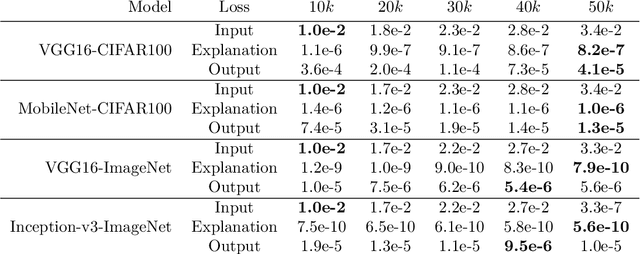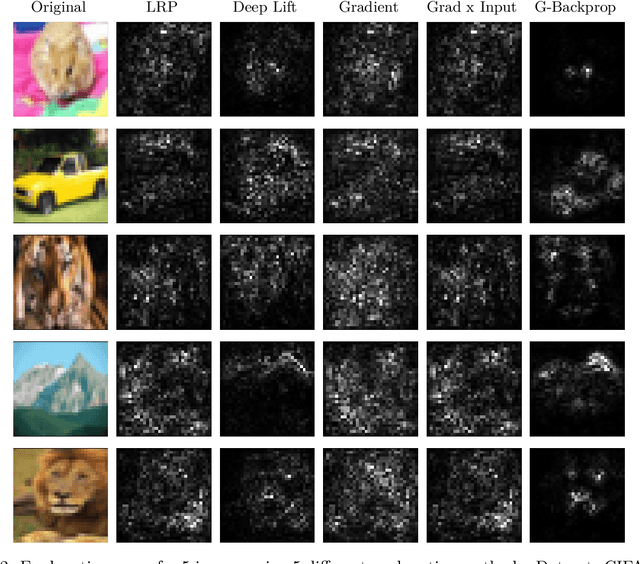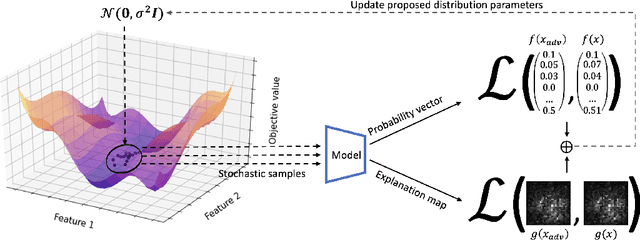Raz Lapid
Don't Lag, RAG: Training-Free Adversarial Detection Using RAG
Apr 07, 2025Abstract:Adversarial patch attacks pose a major threat to vision systems by embedding localized perturbations that mislead deep models. Traditional defense methods often require retraining or fine-tuning, making them impractical for real-world deployment. We propose a training-free Visual Retrieval-Augmented Generation (VRAG) framework that integrates Vision-Language Models (VLMs) for adversarial patch detection. By retrieving visually similar patches and images that resemble stored attacks in a continuously expanding database, VRAG performs generative reasoning to identify diverse attack types, all without additional training or fine-tuning. We extensively evaluate open-source large-scale VLMs, including Qwen-VL-Plus, Qwen2.5-VL-72B, and UI-TARS-72B-DPO, alongside Gemini-2.0, a closed-source model. Notably, the open-source UI-TARS-72B-DPO model achieves up to 95 percent classification accuracy, setting a new state-of-the-art for open-source adversarial patch detection. Gemini-2.0 attains the highest overall accuracy, 98 percent, but remains closed-source. Experimental results demonstrate VRAG's effectiveness in identifying a variety of adversarial patches with minimal human annotation, paving the way for robust, practical defenses against evolving adversarial patch attacks.
Pulling Back the Curtain: Unsupervised Adversarial Detection via Contrastive Auxiliary Networks
Feb 13, 2025Abstract:Deep learning models are widely employed in safety-critical applications yet remain susceptible to adversarial attacks -- imperceptible perturbations that can significantly degrade model performance. Conventional defense mechanisms predominantly focus on either enhancing model robustness or detecting adversarial inputs independently. In this work, we propose an Unsupervised adversarial detection via Contrastive Auxiliary Networks (U-CAN) to uncover adversarial behavior within auxiliary feature representations, without the need for adversarial examples. U-CAN is embedded within selected intermediate layers of the target model. These auxiliary networks, comprising projection layers and ArcFace-based linear layers, refine feature representations to more effectively distinguish between benign and adversarial inputs. Comprehensive experiments across multiple datasets (CIFAR-10, Mammals, and a subset of ImageNet) and architectures (ResNet-50, VGG-16, and ViT) demonstrate that our method surpasses existing unsupervised adversarial detection techniques, achieving superior F1 scores against four distinct attack methods. The proposed framework provides a scalable and effective solution for enhancing the security and reliability of deep learning systems.
On the Robustness of Kolmogorov-Arnold Networks: An Adversarial Perspective
Aug 25, 2024Abstract:Kolmogorov-Arnold Networks (KANs) have recently emerged as a novel approach to function approximation, demonstrating remarkable potential in various domains. Despite their theoretical promise, the robustness of KANs under adversarial conditions has yet to be thoroughly examined. In this paper, we explore the adversarial robustness of KANs, with a particular focus on image classification tasks. We assess the performance of KANs against standard white-box adversarial attacks, comparing their resilience to that of established neural network architectures. Further, we investigate the transferability of adversarial examples between KANs and Multilayer Perceptron (MLPs), deriving critical insights into the unique vulnerabilities of KANs. Our experiments use the MNIST, FashionMNIST, and KMNIST datasets, providing a comprehensive evaluation of KANs in adversarial scenarios. This work offers the first in-depth analysis of security in KANs, laying the groundwork for future research in this emerging field.
Fortify the Guardian, Not the Treasure: Resilient Adversarial Detectors
Apr 18, 2024Abstract:This paper presents RADAR-Robust Adversarial Detection via Adversarial Retraining-an approach designed to enhance the robustness of adversarial detectors against adaptive attacks, while maintaining classifier performance. An adaptive attack is one where the attacker is aware of the defenses and adapts their strategy accordingly. Our proposed method leverages adversarial training to reinforce the ability to detect attacks, without compromising clean accuracy. During the training phase, we integrate into the dataset adversarial examples, which were optimized to fool both the classifier and the adversarial detector, enabling the adversarial detector to learn and adapt to potential attack scenarios. Experimental evaluations on the CIFAR-10 and SVHN datasets demonstrate that our proposed algorithm significantly improves a detector's ability to accurately identify adaptive adversarial attacks -- without sacrificing clean accuracy.
XAI-Based Detection of Adversarial Attacks on Deepfake Detectors
Mar 05, 2024



Abstract:We introduce a novel methodology for identifying adversarial attacks on deepfake detectors using eXplainable Artificial Intelligence (XAI). In an era characterized by digital advancement, deepfakes have emerged as a potent tool, creating a demand for efficient detection systems. However, these systems are frequently targeted by adversarial attacks that inhibit their performance. We address this gap, developing a defensible deepfake detector by leveraging the power of XAI. The proposed methodology uses XAI to generate interpretability maps for a given method, providing explicit visualizations of decision-making factors within the AI models. We subsequently employ a pretrained feature extractor that processes both the input image and its corresponding XAI image. The feature embeddings extracted from this process are then used for training a simple yet effective classifier. Our approach contributes not only to the detection of deepfakes but also enhances the understanding of possible adversarial attacks, pinpointing potential vulnerabilities. Furthermore, this approach does not change the performance of the deepfake detector. The paper demonstrates promising results suggesting a potential pathway for future deepfake detection mechanisms. We believe this study will serve as a valuable contribution to the community, sparking much-needed discourse on safeguarding deepfake detectors.
Open Sesame! Universal Black Box Jailbreaking of Large Language Models
Sep 17, 2023



Abstract:Large language models (LLMs), designed to provide helpful and safe responses, often rely on alignment techniques to align with user intent and social guidelines. Unfortunately, this alignment can be exploited by malicious actors seeking to manipulate an LLM's outputs for unintended purposes. In this paper we introduce a novel approach that employs a genetic algorithm (GA) to manipulate LLMs when model architecture and parameters are inaccessible. The GA attack works by optimizing a universal adversarial prompt that -- when combined with a user's query -- disrupts the attacked model's alignment, resulting in unintended and potentially harmful outputs. Our novel approach systematically reveals a model's limitations and vulnerabilities by uncovering instances where its responses deviate from expected behavior. Through extensive experiments we demonstrate the efficacy of our technique, thus contributing to the ongoing discussion on responsible AI development by providing a diagnostic tool for evaluating and enhancing alignment of LLMs with human intent. To our knowledge this is the first automated universal black box jailbreak attack.
I See Dead People: Gray-Box Adversarial Attack on Image-To-Text Models
Jun 13, 2023Abstract:Modern image-to-text systems typically adopt the encoder-decoder framework, which comprises two main components: an image encoder, responsible for extracting image features, and a transformer-based decoder, used for generating captions. Taking inspiration from the analysis of neural networks' robustness against adversarial perturbations, we propose a novel gray-box algorithm for creating adversarial examples in image-to-text models. Unlike image classification tasks that have a finite set of class labels, finding visually similar adversarial examples in an image-to-text task poses greater challenges because the captioning system allows for a virtually infinite space of possible captions. In this paper, we present a gray-box adversarial attack on image-to-text, both untargeted and targeted. We formulate the process of discovering adversarial perturbations as an optimization problem that uses only the image-encoder component, meaning the proposed attack is language-model agnostic. Through experiments conducted on the ViT-GPT2 model, which is the most-used image-to-text model in Hugging Face, and the Flickr30k dataset, we demonstrate that our proposed attack successfully generates visually similar adversarial examples, both with untargeted and targeted captions. Notably, our attack operates in a gray-box manner, requiring no knowledge about the decoder module. We also show that our attacks fool the popular open-source platform Hugging Face.
A Melting Pot of Evolution and Learning
Jun 08, 2023Abstract:We survey eight recent works by our group, involving the successful blending of evolutionary algorithms with machine learning and deep learning: 1. Binary and Multinomial Classification through Evolutionary Symbolic Regression, 2. Classy Ensemble: A Novel Ensemble Algorithm for Classification, 3. EC-KitY: Evolutionary Computation Tool Kit in Python, 4. Evolution of Activation Functions for Deep Learning-Based Image Classification, 5. Adaptive Combination of a Genetic Algorithm and Novelty Search for Deep Neuroevolution, 6. An Evolutionary, Gradient-Free, Query-Efficient, Black-Box Algorithm for Generating Adversarial Instances in Deep Networks, 7. Foiling Explanations in Deep Neural Networks, 8. Patch of Invisibility: Naturalistic Black-Box Adversarial Attacks on Object Detectors.
Patch of Invisibility: Naturalistic Black-Box Adversarial Attacks on Object Detectors
Mar 09, 2023Abstract:Adversarial attacks on deep-learning models have been receiving increased attention in recent years. Work in this area has mostly focused on gradient-based techniques, so-called white-box attacks, wherein the attacker has access to the targeted model's internal parameters; such an assumption is usually unrealistic in the real world. Some attacks additionally use the entire pixel space to fool a given model, which is neither practical nor physical (i.e., real-world). On the contrary, we propose herein a gradient-free method that uses the learned image manifold of a pretrained generative adversarial network (GAN) to generate naturalistic physical adversarial patches for object detectors. We show that our proposed method works both digitally and physically.
Foiling Explanations in Deep Neural Networks
Nov 27, 2022



Abstract:Deep neural networks (DNNs) have greatly impacted numerous fields over the past decade. Yet despite exhibiting superb performance over many problems, their black-box nature still poses a significant challenge with respect to explainability. Indeed, explainable artificial intelligence (XAI) is crucial in several fields, wherein the answer alone -- sans a reasoning of how said answer was derived -- is of little value. This paper uncovers a troubling property of explanation methods for image-based DNNs: by making small visual changes to the input image -- hardly influencing the network's output -- we demonstrate how explanations may be arbitrarily manipulated through the use of evolution strategies. Our novel algorithm, AttaXAI, a model-agnostic, adversarial attack on XAI algorithms, only requires access to the output logits of a classifier and to the explanation map; these weak assumptions render our approach highly useful where real-world models and data are concerned. We compare our method's performance on two benchmark datasets -- CIFAR100 and ImageNet -- using four different pretrained deep-learning models: VGG16-CIFAR100, VGG16-ImageNet, MobileNet-CIFAR100, and Inception-v3-ImageNet. We find that the XAI methods can be manipulated without the use of gradients or other model internals. Our novel algorithm is successfully able to manipulate an image in a manner imperceptible to the human eye, such that the XAI method outputs a specific explanation map. To our knowledge, this is the first such method in a black-box setting, and we believe it has significant value where explainability is desired, required, or legally mandatory.
 Add to Chrome
Add to Chrome Add to Firefox
Add to Firefox Add to Edge
Add to Edge